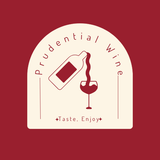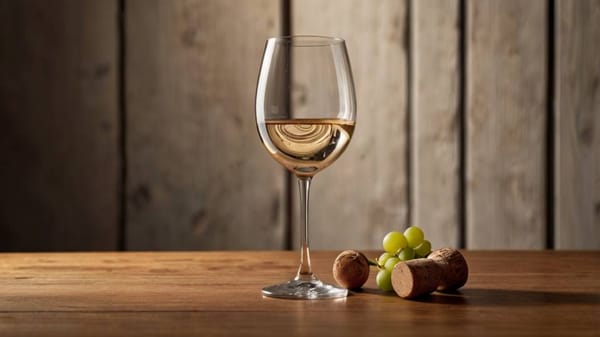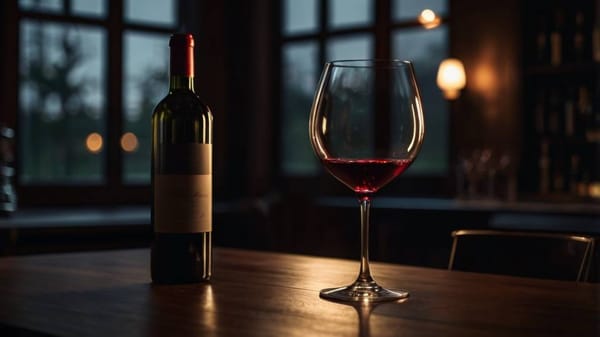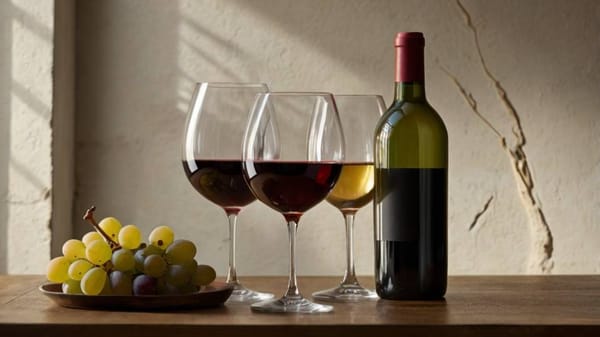Understanding Legs, Tears, and Other Wine Glass Myths
Think wine legs reveal quality? They don’t. Learn to decode what really matters—aroma, texture, and balance—with this myth-busting guide.
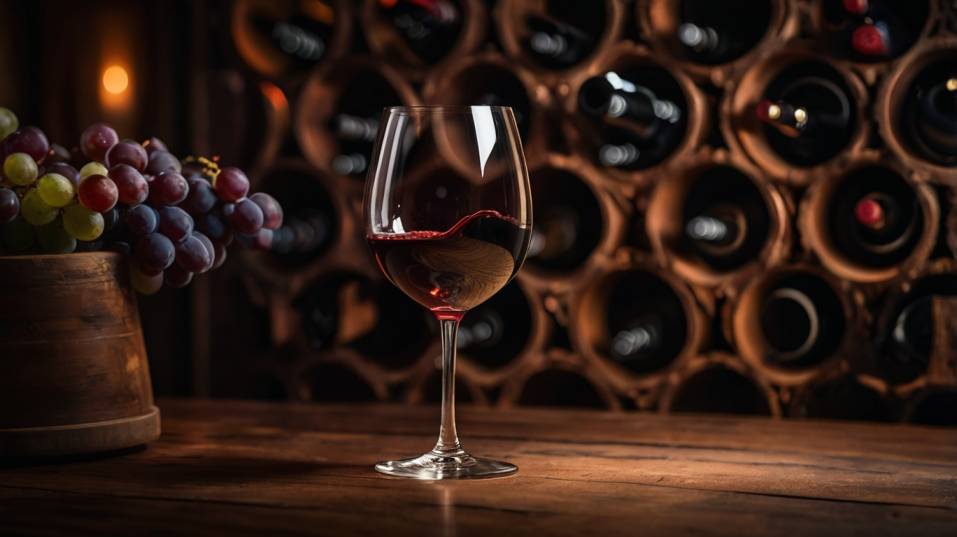
Ever wondered what those streaks running down your wine glass actually mean? If you’re early in your wine journey, it’s easy to get caught up in dramatic myths—like thinking “legs” reveal a wine’s quality.
They don’t. In fact, many common beliefs about wine glasses, color, and stains distract you from what truly matters: aroma, texture, and balance.
Let’s cut through the noise and focus on what helps you taste smarter and choose with more confidence.
What “Legs” Really Tell You (and What They Don’t)
Wine legs—also called “tears”—are the streaks that appear on the inside of your glass after you swirl. They form when alcohol evaporates more quickly than water, creating surface tension.
The science is simple: higher alcohol content leads to more visible legs. But this is just chemistry at work, not a reflection of craftsmanship, balance, or complexity.
A cheap, mass-produced wine at 14.5% ABV will often show more legs than a nuanced, lower-alcohol bottle from a cool-climate region.
That’s why legs are nearly useless as a quality marker. They tell you about alcohol, maybe residual sugar—but not finesse, structure, or aging potential.
If you want to understand a wine, focus on its aroma, taste, and texture. That’s where the truth is.
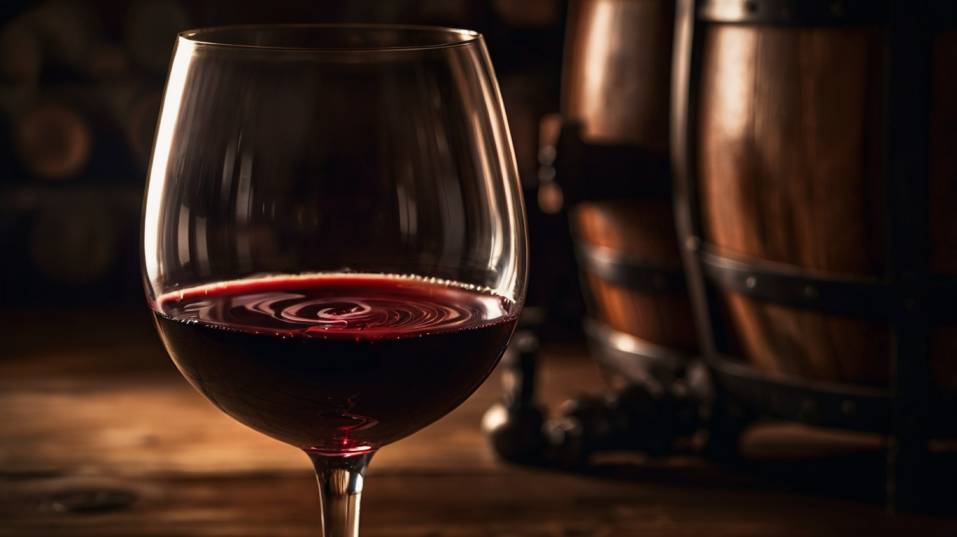
Glass Shape: Helpful, Not Magical
The right wine glass doesn’t transform a mediocre wine—but it can enhance a good one. Here’s the key: shape affects aroma and delivery.
You want a glass with a bowl wide enough to swirl comfortably, and a rim that narrows slightly. That bowl captures and concentrates aromas so you can smell them clearly before you sip.
Everything else is detail. Yes, some glass shapes are optimized for specific grape varieties—but don’t get caught up chasing the perfect glass for every bottle.
What matters more is clarity (no colored or etched glass), cleanliness (no residual detergent or dust), and proportion (not too bulky, not too small).
You’re aiming for function, not flash. A simple, well-made wine glass will support your tasting far more than a drawer full of novelty stems.
Stop Reading the Color Like a Mood Ring
Color gets over-interpreted in wine. While it can offer subtle hints—age, grape variety, extraction level—it doesn’t deliver firm answers.
A pale red doesn’t mean weak. A dark white doesn’t mean sweet. Color is influenced by grape skin, maceration time, filtration, and age.
For example, Pinot Noir is naturally light in pigment, even when it’s rich and structured. Nebbiolo can appear translucent but carry fierce tannins and age for decades.
White wines like Chardonnay may deepen in color with oak aging, but a golden hue doesn’t confirm complexity.
Instead of guessing from the shade, pay attention to clarity. A hazy wine might signal it’s unfiltered or naturally made.
A brilliantly clear wine might speak to a more polished, commercial style. Both can be excellent—but the context matters more than the color itself.
Aroma: The First Reliable Clue
Before you even sip, the nose offers a map. Aromas tell you where the wine might be going. Is it bright and citrusy or earthy and brooding? Clean or volatile? Young or starting to age?
Take your time. Swirl lightly, then inhale with intention. Fresh wines often lead with fruit—citrus, berries, orchard fruit.
More mature bottles may show secondary notes like toast, nuts, herbs, leather, or dried flowers. These layers give you a sense of age, winemaking style, and grape variety.
Learning to smell well isn’t about memorizing aromas—it’s about paying attention. Over time, patterns emerge.
You’ll notice the green bell pepper in Cabernet Franc, the rose petal in Nebbiolo, the lanolin in aged Semillon. These impressions become part of your vocabulary as a taster.
Texture: The True Measure of Quality
What sets great wines apart isn’t legs—it’s balance. That’s something you feel. Texture is where a wine reveals its internal architecture: acid, tannin, alcohol, body.
Does the wine glide across your palate or grip it? Is the acidity sharp or refreshing? Do the tannins dry your mouth or frame the flavor? Is the body weightless, creamy, or dense? These sensations matter far more than any visual cue.
Balance doesn’t mean every component is equal—it means they work together. A sweet wine with zippy acidity can feel balanced.
A bold red with firm tannins and generous fruit can too. When a wine feels cohesive, seamless, and satisfying from start to finish, that’s balance. You can’t see it in the glass—you have to taste it.
Common Myths That Deserve to Fade
Wine myths survive because they sound poetic. But they often keep new drinkers from learning more meaningful skills.
“Good legs mean good quality.”
False. They tell you about alcohol, not craftsmanship.
“Darker wine = stronger wine.”
Often misleading. Some of the most structured wines look deceptively light.
“The more expensive the glass, the better the wine tastes.”
Not necessarily. Clean, well-shaped glassware is what counts—not price.
“If the wine stains the glass, it must be full-bodied.”
Not true. That’s just pigment, not proof of depth. Better to trust your senses. Let experience—and focused attention—replace these tired shortcuts.
How to Build Confidence as a Taster
No amount of theory beats experience. To sharpen your palate, taste regularly and take mental notes. What stood out? What changed after a few minutes? What lingered?
Try tasting similar wines side by side: a cool-climate Pinot Noir versus a warmer one. An unoaked Chardonnay next to one that spent time in barrel. You’ll start to notice contrast—and that’s where learning lives.
Don’t worry about being “right.” There’s no official answer sheet. Tasting is personal, but it becomes powerful when you combine curiosity with awareness.
Final Thoughts
Wine doesn’t need to be a puzzle of traditions and tricks. Legs and tears might look dramatic, but they won’t help you taste better.
Real insight comes from slowing down, smelling deeply, and feeling the wine on your palate. Trust what your senses are telling you.
Tonight, pour a glass with intention. Swirl, yes—but skip the guesswork. Smell more. Taste with focus. Forget the folklore and tune into the details that matter. That’s how you start drinking like someone who truly understands wine.
